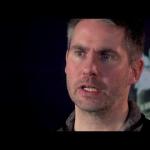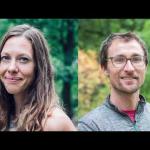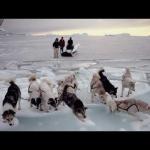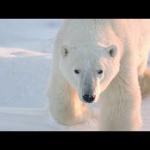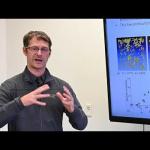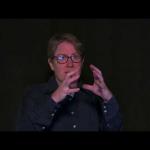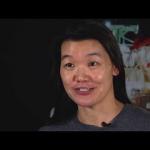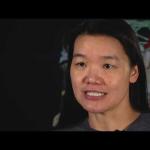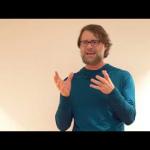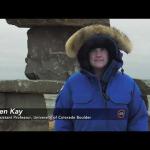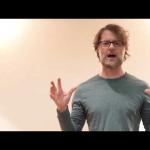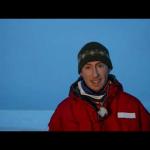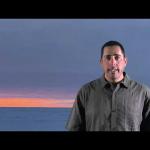Earth Science Stories
This video is part of the Climate Literacy Principles collection by CLEAN. This video highlights Climate Literacy Principle 1.
Science Content Video
This video is part of the Climate Literacy Principles collection by CLEAN. This video highlights Climate Literacy Principle 2.
Science Content Video
This video is part of a collection - “Frozen in the Ice: Exploring the Arctic." Check out the MOSAiC page for more details.
In this specific lesson, Dr. Marcel Nicolaus describes his role as MOSAiC's sea ice team leader and why their work is so crucial to the expedition. In studying sea ice, snow, and microorganism habitats, the team hopes to improve Arctic forecasts and better understand how drifting patterns/processes interact.
Science Content Video
This video is part of a collection - “Frozen in the Ice: Exploring the Arctic." Check out the MOSAiC page for more details.
In this video, Drs. Anne Gold and Matthew Shupe conclude the series "Frozen in the Ice: Exploring the Arctic" with a summary of the course's major lessons.
Science Content Video
This video is part of a collection - “Frozen in the Ice: Exploring the Arctic." Check out the MOSAiC page for more details.
In this specific lesson, Dr. James Overland discusses how sea ice loss can cause major changes in the Arctic climate — and more specifically, in the polar jet stream.
Science Content Video
This video is part of a collection - “Frozen in the Ice: Exploring the Arctic." Check out the MOSAiC page for more details.
In this specific lesson, Dr. John Walsh discusses how climate change is apparent throughout the Arctic (air, land, ice, and ocean) and that these changes are already impacting humans, wildlife, and the environment.
Science Content Video
This video is part of a collection - “Frozen in the Ice: Exploring the Arctic." Check out the MOSAiC page for more details.
In this specific lesson, Dr. Jessie Creamean discusses how aerosols affect clouds and precipitation in the atmosphere and why they're important to the Arctic.
Science Content Video
This video is part of a collection - “Frozen in the Ice: Exploring the Arctic." Check out the MOSAiC page for more details.
In this specific lesson, Dr. Clara Hoppe sheds light on the small but mighty phytoplankton! You'll learn about MOSAiC's special interest in primary production, carbon export, and groundbreaking data scientists expect to glean from the expedition.
Science Content Video
This video is part of a collection - “Frozen in the Ice: Exploring the Arctic." Check out the MOSAiC page for more details.
In this specific lesson, Dr. Jeff Bowman touches on differences between the adaptive strategies of warm vs. cold-bodied organisms. You'll learn about homeostasis and thermal equilibrium as they relate to the harsh Arctic environment.
Science Content Video
This video is part of a collection - “Frozen in the Ice: Exploring the Arctic." Check out the MOSAiC page for more details.
In this specific lesson, Dr. Jeff Bowman will teach you about metabolic challenges and opportunities present for organisms living in Arctic sea ice.
Science Content Video
This video is part of a collection - “Frozen in the Ice: Exploring the Arctic." Check out the MOSAiC page for more details.
In this specific lesson, Dr. Jennifer Hutchings defines sea ice kinetics. Throughout the MOSAiC expedition, scientists will be monitoring the kinematics of ice motion and determining the forces involved in opening, shearing, and closing sea ice.
Science Content Video
This video is part of a collection - “Frozen in the Ice: Exploring the Arctic." Check out the MOSAiC page for more details.
In this specific lesson, Dr. Allison Fong discusses Arctic ice melt and what this means for the surrounding biological environment. You'll ponder the question: Will the Arctic be net primary productive or will it ultimately be a source of carbon?
Science Content Video
This video is part of a collection - “Frozen in the Ice: Exploring the Arctic." Check out the MOSAiC page for more details.
In this specific lesson, Dr. Allison Fong introduces you to nutrient biogeochemistry in the Arctic Ocean. You'll learn about nutrient distribution and how it influences primary production.
Science Content Video
This video is part of a collection - “Frozen in the Ice: Exploring the Arctic." Check out the MOSAiC page for more details.
In this specific lesson, Dr. Matthew Shupe breaks down the work of MOSAiC's atmosphere team. Following team goals and using such tools as lasers, radar technology, and weather balloons, scientists can better understand the Arctic system (air, ice, and sea) as a whole.
Science Content Video
This video is part of a collection - “Frozen in the Ice: Exploring the Arctic." Check out the MOSAiC page for more details.
In this specific lesson, Drs. Jennifer Kay and Ariel Morrison introduce positive and negative albedo feedbacks that are important to the Arctic climate system (and polar bears!).
Science Content Video
This video is part of a collection - “Frozen in the Ice: Exploring the Arctic." Check out the MOSAiC page for more details.
In this specific lesson, Dr. Matthew Shupe explains the significance of clouds in the Arctic system and how they play important roles in precipitation, energy transfer, and climate modeling.
Science Content Video
This video is part of a collection - “Frozen in the Ice: Exploring the Arctic." Check out the MOSAiC page for more details.
In this specific lesson, Dr. Chris Cox will teach you about Earth's atmosphere. You'll learn about its chemical composition, temperature structure, energy fluxes, and how MOSAiC scientists measure the atmosphere's energy budget.
Science Content Video
This video is part of a collection - “Frozen in the Ice: Exploring the Arctic." Check out the MOSAiC page for more details.
In this specific lesson, Dr. John Cassano describes the role of the Arctic in the Earth's energy budget and climate system.
Science Content Video
This video features Jeff Lukas from CIRES' Western Water Assessment who discusses the overall climate patterns of the Colorado River Basin, and how we can use this information to study the past, present, and future climate of the western United States. This video is part of the Water in the Western US lecture series.
Science Content Video


